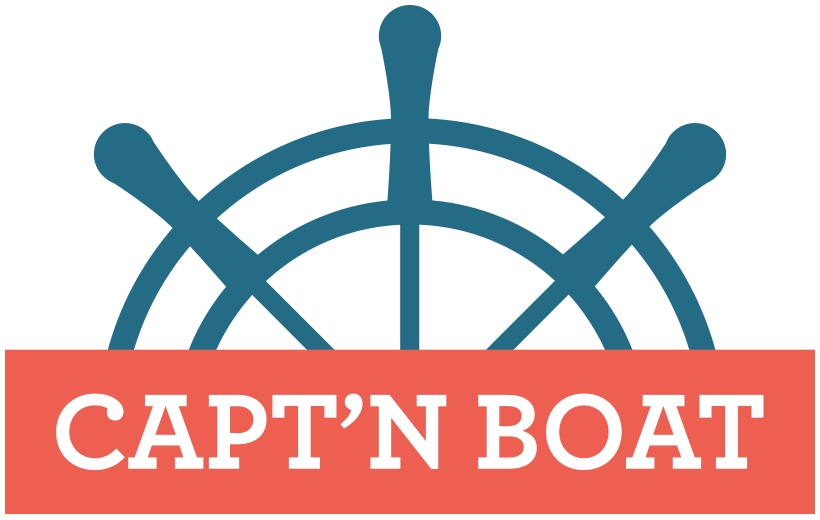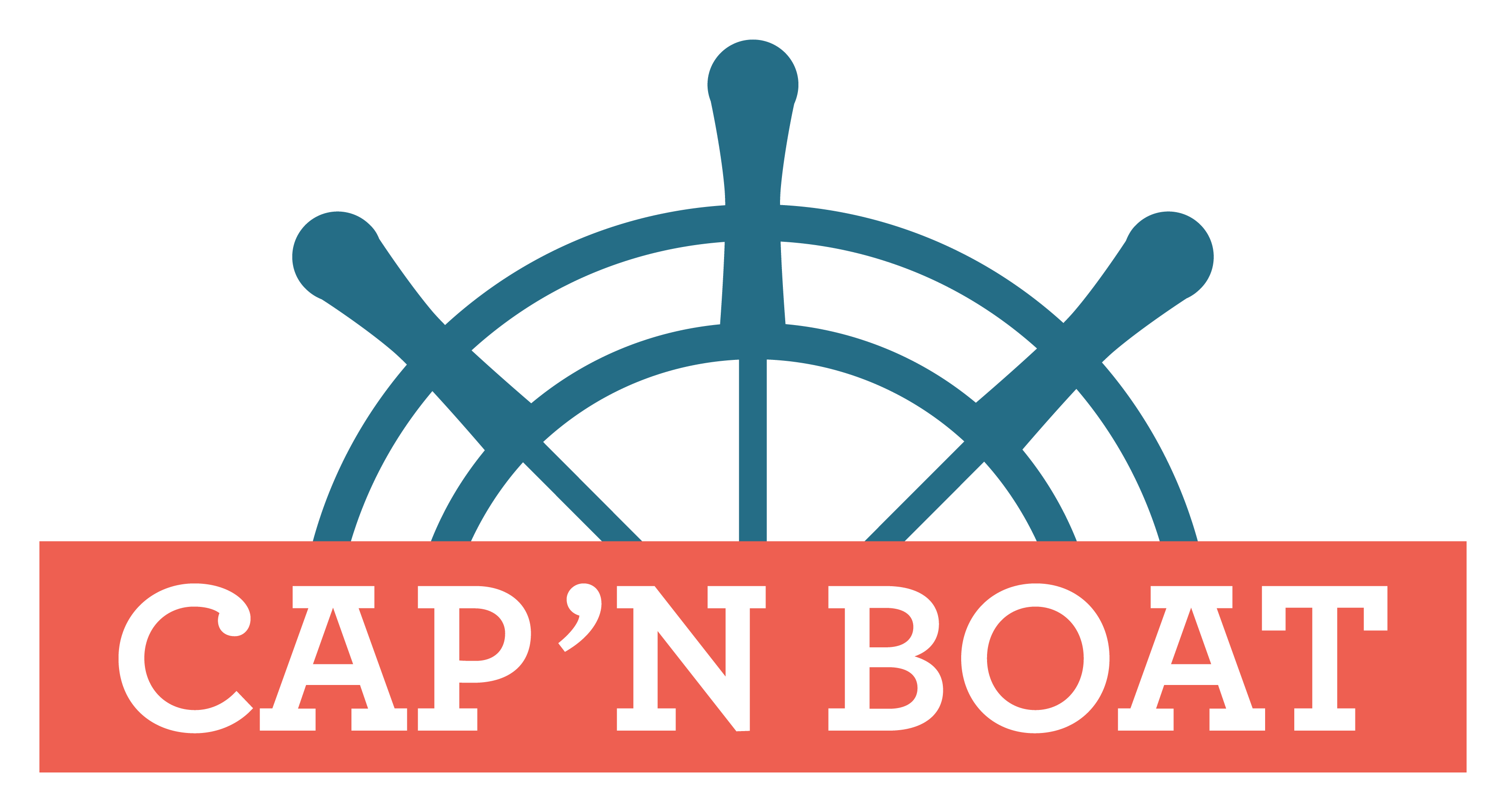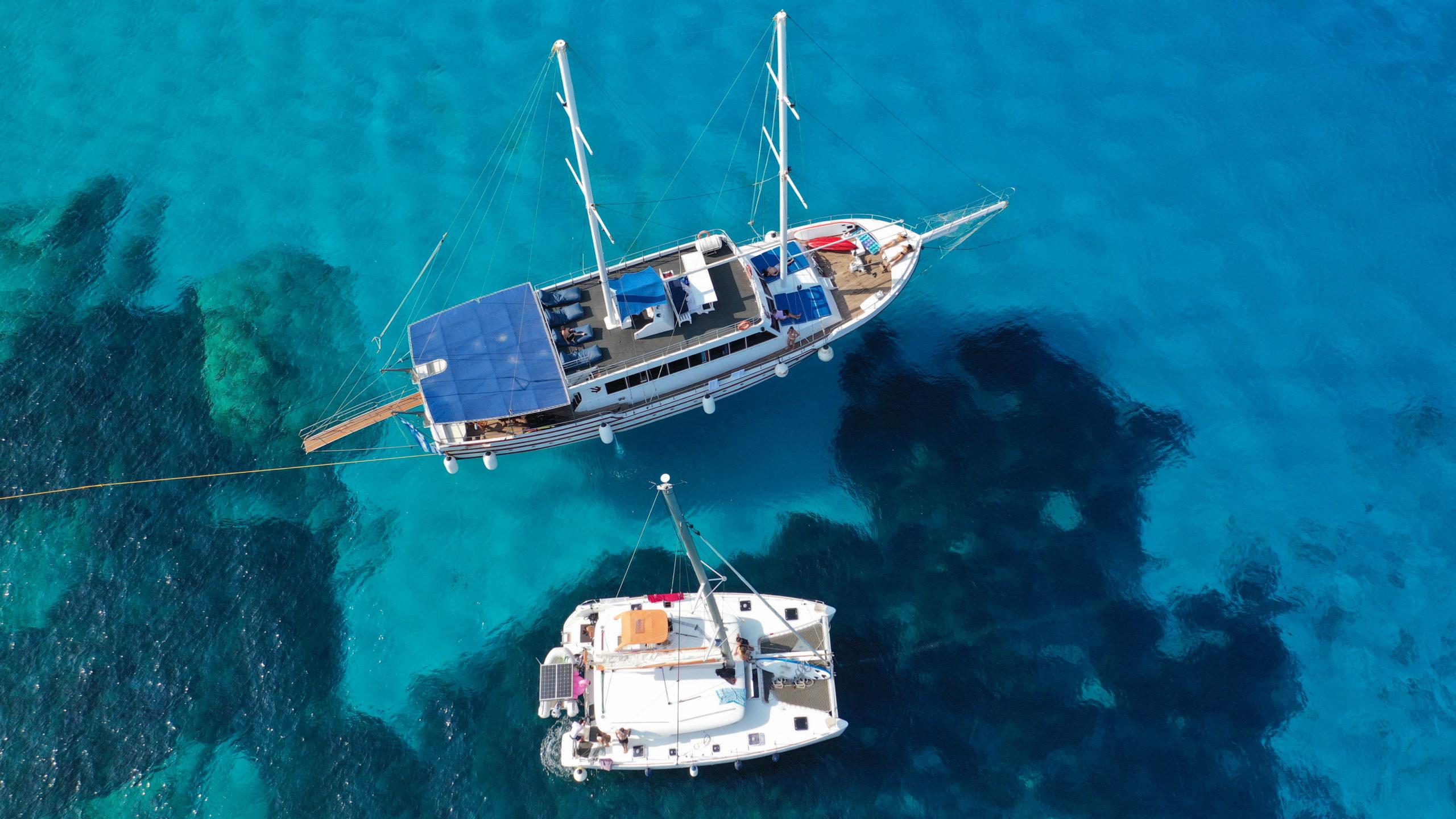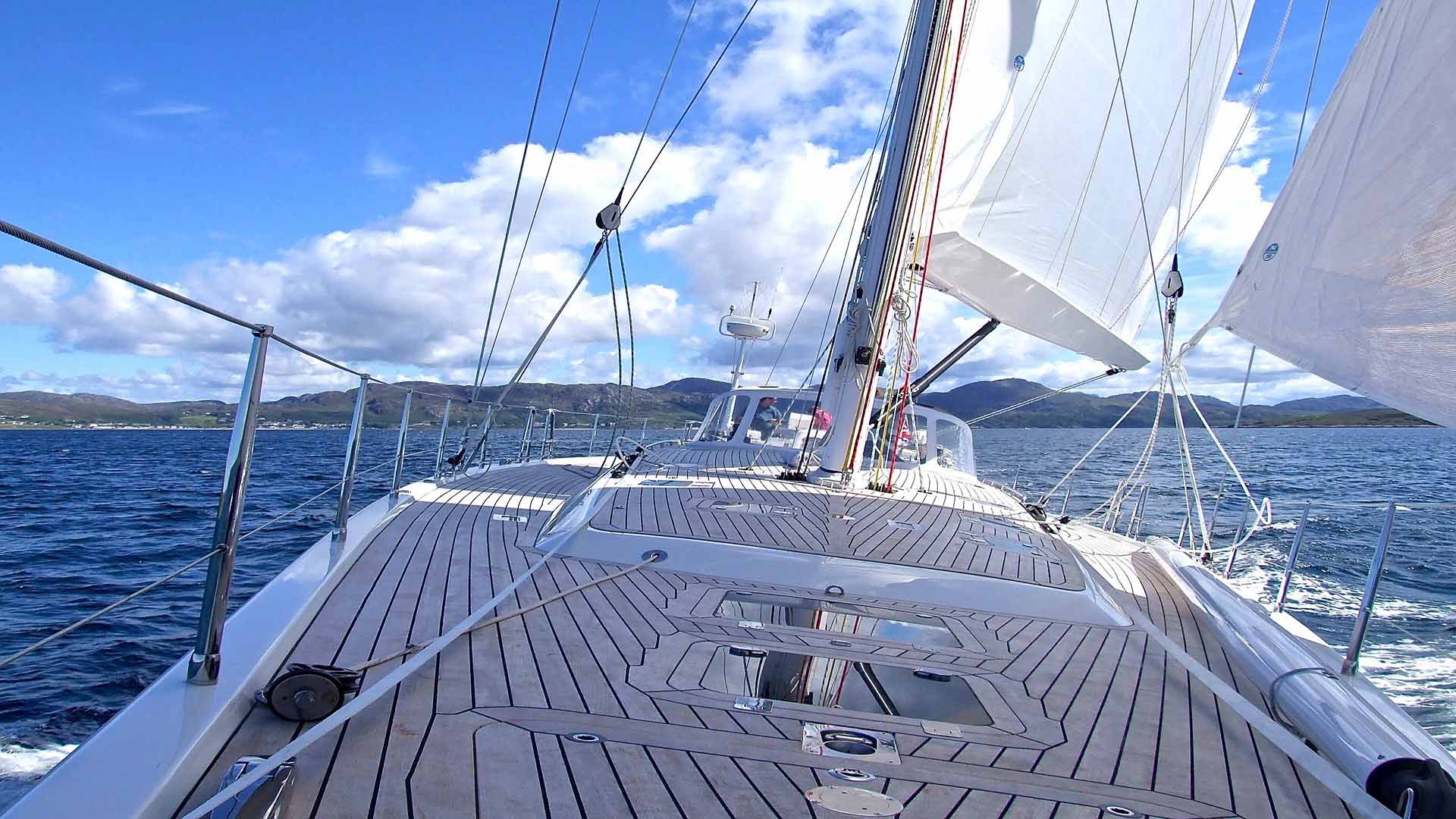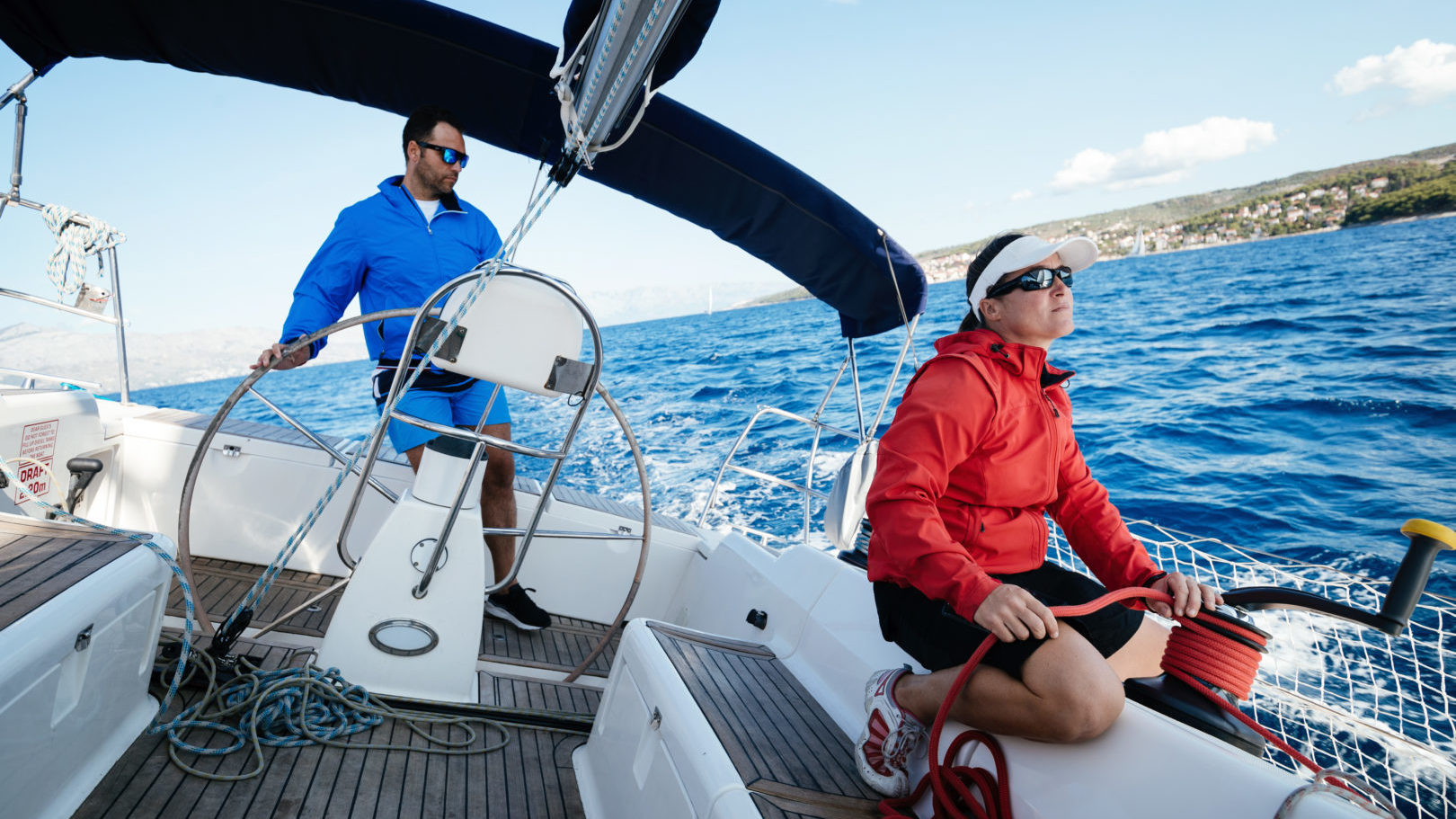
How to Pay a Professional Skipper/Stewardess: Things to Know
With the democratisation of yachting in recent years, the sailors’ jobs, in particular skippers and stewardess, are increasingly sought after. However, the conditions of employment and remuneration of a sailor are still too little known to clients/owners.
The remuneration of a professional sailor’s service is not random; it responds to the need for the sailor to support himself and to make a profit.
Indeed, a sailor’s remuneration covers the various charges relating to the exercise of his profession, from the cost of diplomas and renewal of training courses to social security contributions and charges.
Several other variables must alsobe taken into account when working out a remuneration, in particular the type of service, the geographical area in which the service takes place, the position occupied by the sailor…
Capt’n Boat deciphers for you the cost of a sailor.
1. The basis of a sailor’s remuneration
Remuneration is the amount paid to the sailor in return for work performed. Its generally fixed for a specific period of work.
A sailor’s remuneration is mostly by fixed salary. With the exception of travel contracts, especially for ferrying assignments, which are based on a flat rate remuneration according to the number of nautical miles travelled.
This remuneration varies depending on:
- the type of the sailor’s service (conveying, charter, coaching),
- his role on board (captain, seaman or steward.ess),
- the lenght of the mission,
- the type of boat,
- the coast distance,
- the country.
There are other variables that can be taken into account in the remuneration requested by the sailor, notably his experience. A sailor with 20 years of experience who is well known in the sector will logically be more expensive than a novice sailor.
To be noted: Travel and subsistence cost may be included in the sailor’s remuneration, or planned in advance. It is up to the sailor to organize and negociate these terms with the client.


A. Gross revenue VS net revenue
The sailor’s gross remuneration corresponds to his salary before deduction of ENIM charges and contributions.
Net remuneration is the final salary after deduction of the sailor’s charges.
In France, to respect the legal minimum (French Minimum Wage)it is not possible to charge a sailor’s service less than 170 € / day in Category 3, 180 € / day in Category 6, 190 € / day in Category 8 and 205 € / day in Category 12.
In practice total remuneration (including all charges) is way higher; in metropolitan France it is up around 300 € / day.
Regarding the type of mission, the boat size, the position, and the greographical area, we find price differences.
- Charter or coaching missions:
As an indication, here is an average price list of remunerations taxes included / days invoiced, for the positions of skipper and steward.ess, on Capt’n Boat:
| Country | Position | Short boat < 15m | Medium <18 m | Length> 18 m |
| France | Skipper | 350 € | 370€ | 400 € |
| France | Steward.ess | 280 € | 300 € | 350 € |
| Balearic Islands | Skipper | 260 € | 280 € | 320 € |
| Balearic Islands | Steward.ess | 230 € | 250 € | 280 € |
| Europe | Skipper | 260 € | 280 € | 320 € |
| Europe | Steward.ess | 230 € | 250 € | 280 € |
| Caribbean | Skipper | 295 € | 310 € | 330 € |
| Caribbean | Steward.ess | 230 € | 250 € | 280 € |
| BVI – USVI Bahamas | Skipper | 350 € | 380 € | 450 € |
| BVI – USVI Bahamas | Steward.ess | 280 € | 330 € | 380 € |
- Conveying missions:
For the conveying missions, remuneration is basedon the number of nautical miles. In France, a crew in charge of a conveying on a boat equipped with an autopilot is paid ~4 € per nautical mile. If the boat does not have an autopilot, a minimum of one sailor must be added, which will increase the cost of the service.
To be noted: With the health crisis and the war in Ukraine, the cost of fuel and the price of shipping by freighter have risen sharply.
For the conveying of a 12.5 meters, or 40 feet, sailing boat, from Southampton to Malta:
- Price by cargo : ~17 000€ against (~10 000€ before the crisis)
- Price of a conveying performed by a Captn’ Boat crew (Captain + Officer of Watch): ~8 700€

B. Sailor’s remunerations on Capt’n Boat
Capt’n Boat aims to be transparent about the remuneration of the platform’s sailor. Depending on the type of service, the position sought, the dates and destinations, a remuneration is proposed to the clients. The detail of this remuneration is visible on each mission on the platform.
Is added to this a 18% commission of the remuneration (10% for the missions longer than 3 months) including:
- a multi-risk damage insurance,
- a Thrid Party Liability Insurance,
- the bank fees,
- the Capt’n Boat services fees.
- On the clients side:
Capt’n Boat proposes a sailor’s remuneration according to the market standards while respecting the legal minimums. The remunerations proposed by Capt’n Boat are not fixed, the clients are free to adjust them upwards or downwards, and the sailors are free to negociate them with the shipowners.

- On the sailors’ side:
On Capt’n Boat, sailors apply for the missions that interest them and for which they have the appropriate qualifications and training. If the sailor considers the remuneration annonced by the client to be too low, he can negociate a new one.
Sailors can apply for a mission through their company directly: they will then be responsible for paying their social charges and contributions.
For sailors who do not have self-employed status, they can choose to apply via a Maritime Labour Company: Chess & M, Planète Mer Service… which will then take care of paying the remunerations, ENIM and URSSAF activity declarations and the sailor’s social contributions.
This enrolment solution has of course a cost for the sailor, which ranges from 34% to 41% (depending on the enrolment category) of the rate invoiced to clients, to pay all the employer’s social charges, wages, URSAFF, ENIM, unemployment, etc.

Details of Sailor’s remuneration on Capt’n Boat
Not included in the total amount of the transaction are:
- Travel expenses (plane tickets, train, taxis…)
- On board expenses (bunkering, fuel…)
Create an ad on Capt’n Boat to find a professional skipper at the right price!
2. Working conditions of a professional skipper
In order to properly employ a sailor, certain requirements regarding sailor training, liability, working hours and social security contributions must be followed.
Indeed, clients must ensure that the sailor hired has the right diplomas and qualifications to carry out the mission given to him. In addition, the employer must respect the regulatory working conditions imposed both in terms of responsibility and working hours.
- Working time:
The limits on working hours are set at a maximum from 14 hours per day and 72 hours over 7 days. Of course, these limits can be adapted by way of derogations depending on the type of activity and the conditions of exercise.
- Resting time:
The sailor on board benefits from a minimum of 10 hours’ rest in a 24-hour period. This daily rest may be split into a maximum of 2 periods (one of which must be at least 6 hours). And 77 hours for a period of 7 days worked.


A. The training obligation
In order for a sailor to be able to work legally, he or she must meet several conditions, particularly in terms of training.
Indeed, the professional sailor must obtain a certain number of certificates and training courses in order to be able to work as a skipper, sailor, mechanic, steward.ess etc…
Note 1: The cost to obtain a Brevet de Capitaine 200 voile is ~4500€.
Most of these diplomas and training courses are subject to revalidation every 5 years. This obliges sailors to apply for revalidation by proving a certain amount of effective time at sea and/or by participating in a refresher course.
The revalidation of maritime professional qualifications and training has a significant cost for the sailor.
As an example, here are the average costs for revalidating the professional maritime qualifications and training courses offered by the CEFCM (Centre Européen de Formation Continue Maritime) :
- Refresher course for a Level 1 Medical Education (EM1): ~130€.
- Medical Education Level 3 (EM3): ~940€.
- General Operator Certificate (CGO): ~355€.
- Safety Training Certificate (STC): ~€610
Note 2: The costs of revalidations of titles and training courses can be covered by the sailor’s CPF account or by Pôle Emploi.

B. Sailor’s responsibility
Being a sailor is a job with a lot of responsibility. In particular, the position of skipper/captain is one of « sole master on board ».
It is the notion of responsibility that partly explains the difference in salary between a skipper and a sailor or host.ess.
Indeed, the skipper, as captain, is responsible for the safety of the boat and the passengers. The most important risk for a skipper would be to damage the boat on which he is sailing or to injure a person on board. This is why it is necessary for the skipper to take out professional and civil liability insurance (provided automatically to skippers for services via Capt’n boat).

The sailor’s responsibility and working hours must be stipulated in the employment contract.
C. ENIM membership obligations and contributions
All professional sailors must be affiliated to the social protection scheme for sailors: ENIM, and pay the contributions linked to their activity pursuant to Article L 5551-1 of the Transport Code.
Self-employed sailors must systematically declare their activities via the Déclaration Sociale Nominative (DSN) to the Urssaf Poitou Charentes and then pay their contributions.
For employed sailors, it is up to the employer / shipowner / maritime labour company to declare the activity of its sailor.
Conclusion
The profession of professional sailor requires numerous qualifications and entails a greater or lesser degree of responsibility depending on the role held on board. A sailor’s remuneration covers training and renewal costs, ENIM and URSSAF charges and contributions, and the VAT applied in the various countries. It is justified by the level of qualification, experience and responsibility of the sailor.
It is important to pay the sailors hired fairly and commensurate with the effort made.
Of course, depending on the advertised remuneration, sailors are free to accept or not to accept the service. The higher the remuneration, the more professional sailors will apply.

However, the current shortage of sailors due to the democratisation of yachting has led to greater tension between supply and demand. To enable everyone to find the sailor who will accompany them on their delivery or cruising needs, we are seeing a revaluation of the profession reflected in an increase in remuneration.
Find your professional sailor on Capt’n Boat and benefit from a multirisk & damage insurance!
Sources
- ENIM, the french social regime for seamen
- Order of 24 March 2022 increasing the standard salaries used as a basis for calculating shipowners’ contributions, contributions and certain benefits for seamen in the commercial, pleasure boating, fishing and marine culture sectors.
- Marins.Urssaf.fr
- Maritime Labour Convention MSC 2006
- Decree No. 52-540 of 7 May 1952 amending Decree No. 48-1709 of 5 November 1948 on the flat-rate wage used as a basis for calculating the contributions of seamen and shipowners to the funds of the national establishment for naval invalids.
- Decree n°2005-305 of 31 March 2005 relating to the working hours of seafarers
- Transport Code, Working hours, rest, holidays and wages …
